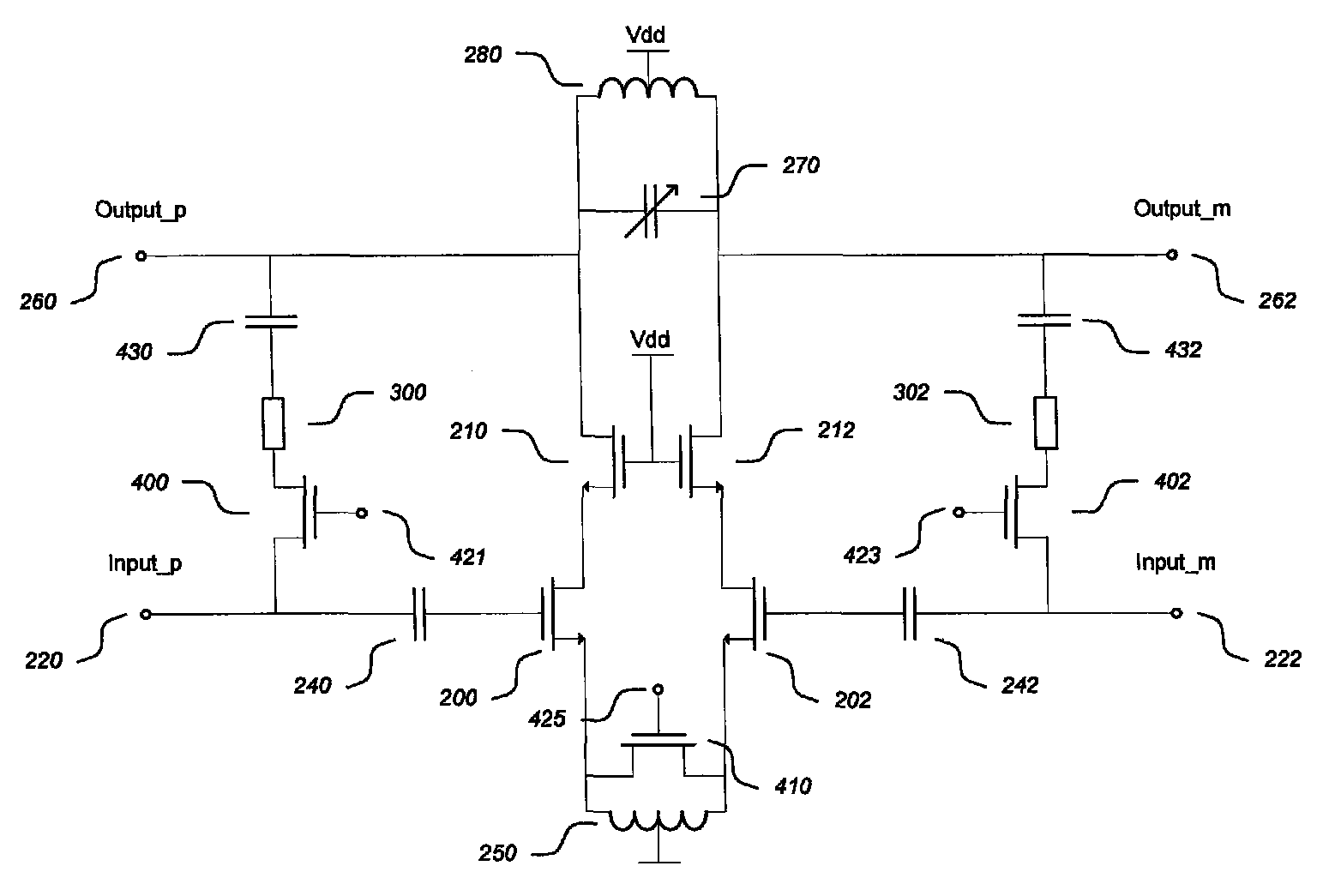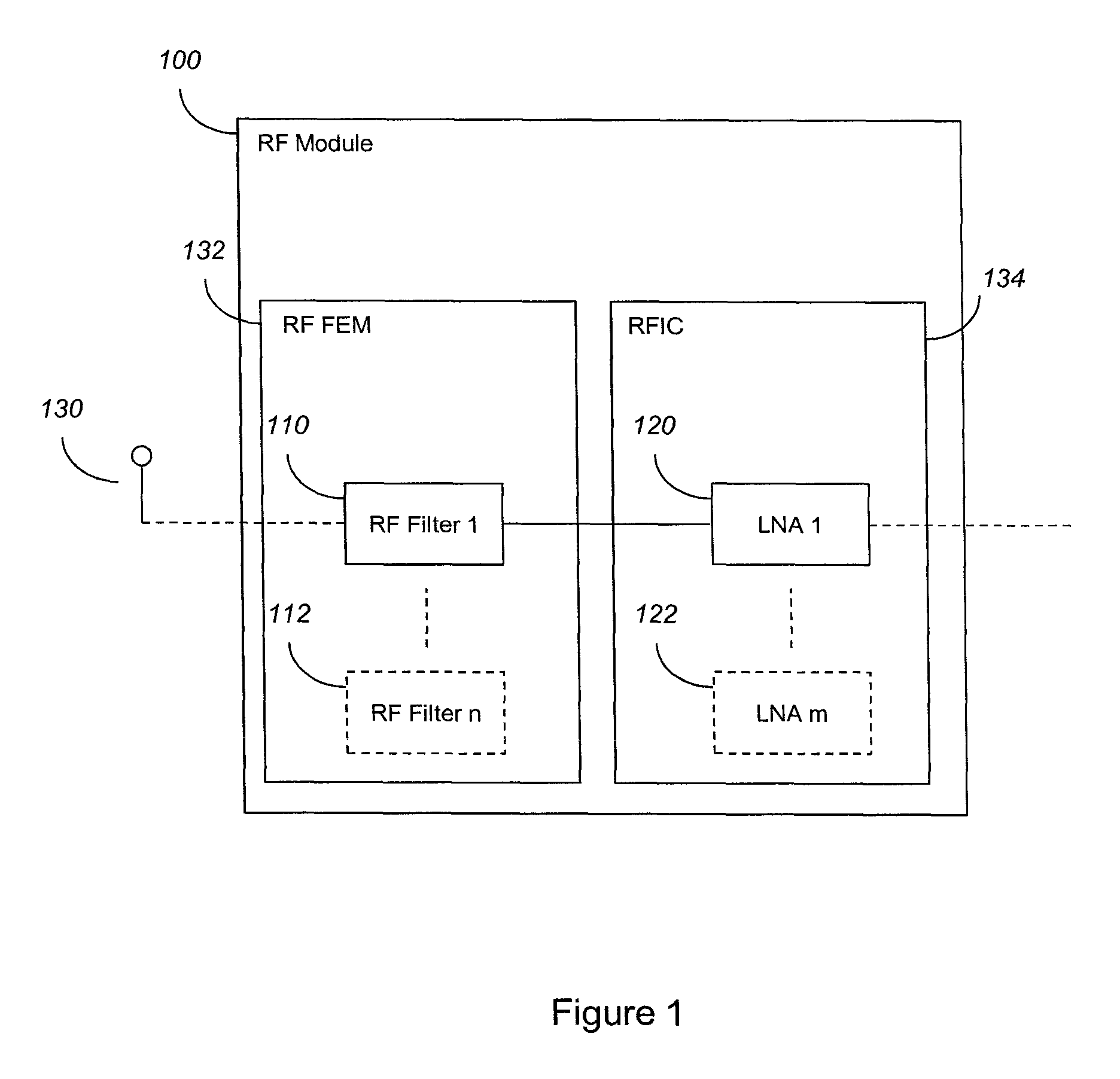Amplifier
a low-noise amplifier and amplifier technology, applied in amplifiers, dc-amplifiers with dc-coupled stages, positive-feedback circuit arrangements, etc., can solve the problems of less sensitive receivers, high cost of external matching components, and low insertion loss of amplifying stages in receivers, so as to reduce the cost and die area
- Summary
- Abstract
- Description
- Claims
- Application Information
AI Technical Summary
Benefits of technology
Problems solved by technology
Method used
Image
Examples
Embodiment Construction
[0046]Several LNA structures are known, each of these having certain benefits and drawbacks regarding their noise performance, overall cost, and input matching capabilities.
[0047]A first known LNA topology is the inductively degenerated LNA topology, a detailed analysis of which has been given in, for example, in D. K. Shaeffer and T. H. Lee, “A 1.5-V, 1.5-GHz CMOS low noise amplifier,” IEEE J. of Solid-State Circuits, vol. 32, no. 5, May 1997, pp. 745-759.
[0048]An exemplary inductively degenerated LNA circuit is depicted in FIG. 2. The LNA of FIG. 2 is a differential amplifier, where transistors 200 and 210 form the positive or ‘plus’ side of the differential amplifier, and transistors 202 and 212 form the negative or ‘minus’ side of the differential amplifier. The plus and minus sides of the differential amplifier are each arranged in a cascode configuration, where transistors 200 and 202, each arranged in a common source configuration, form the input transistors of the plus and m...
PUM
 Login to View More
Login to View More Abstract
Description
Claims
Application Information
 Login to View More
Login to View More - R&D
- Intellectual Property
- Life Sciences
- Materials
- Tech Scout
- Unparalleled Data Quality
- Higher Quality Content
- 60% Fewer Hallucinations
Browse by: Latest US Patents, China's latest patents, Technical Efficacy Thesaurus, Application Domain, Technology Topic, Popular Technical Reports.
© 2025 PatSnap. All rights reserved.Legal|Privacy policy|Modern Slavery Act Transparency Statement|Sitemap|About US| Contact US: help@patsnap.com



